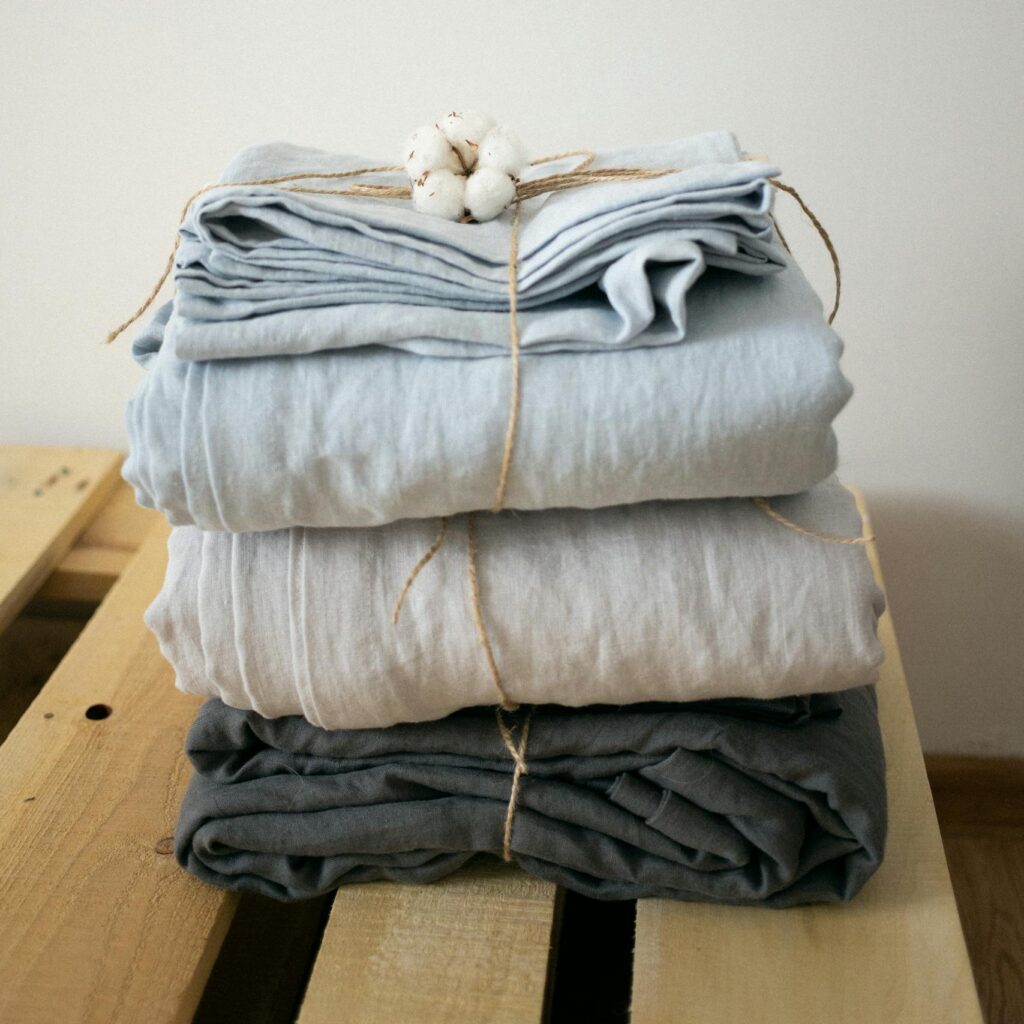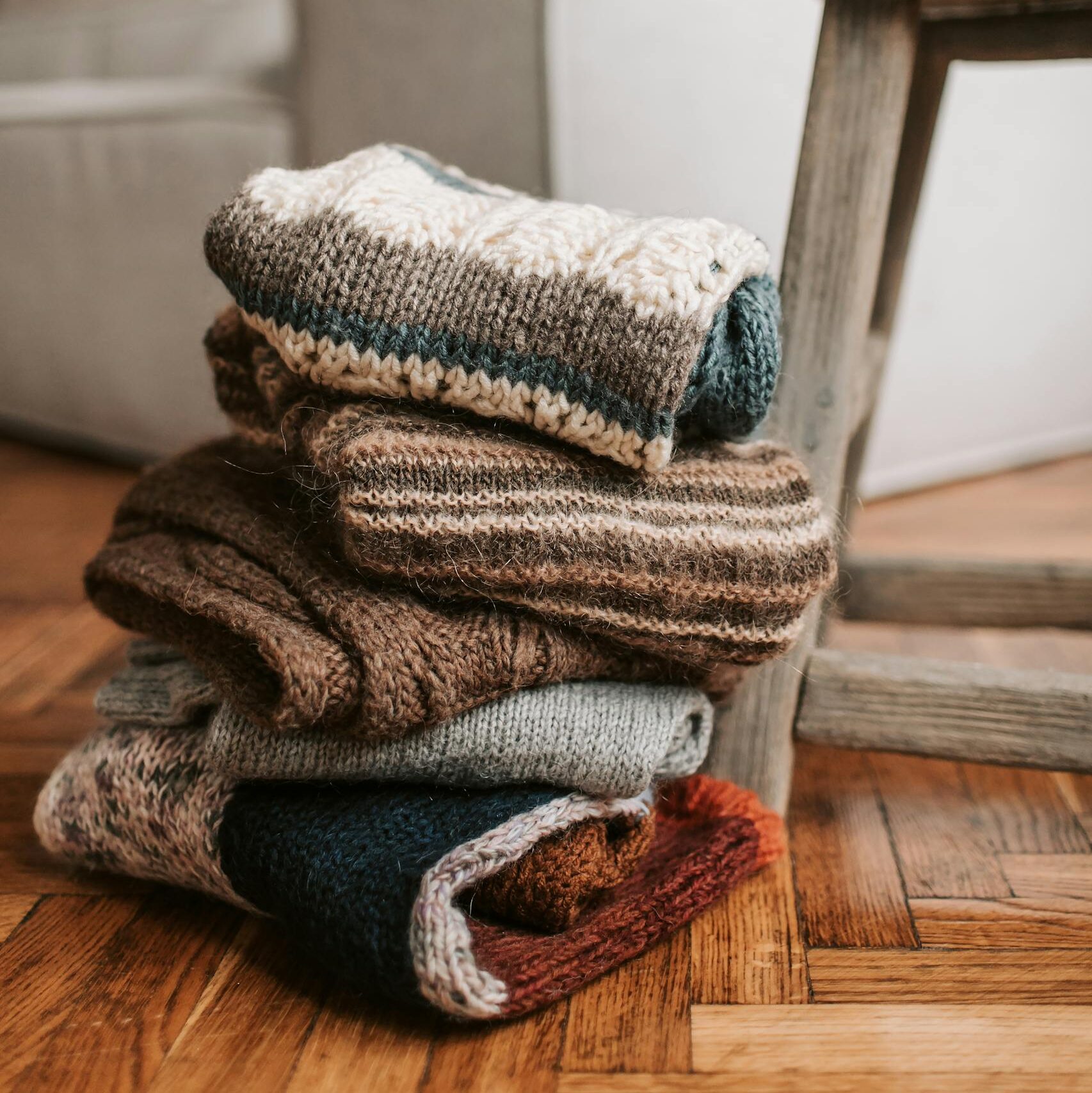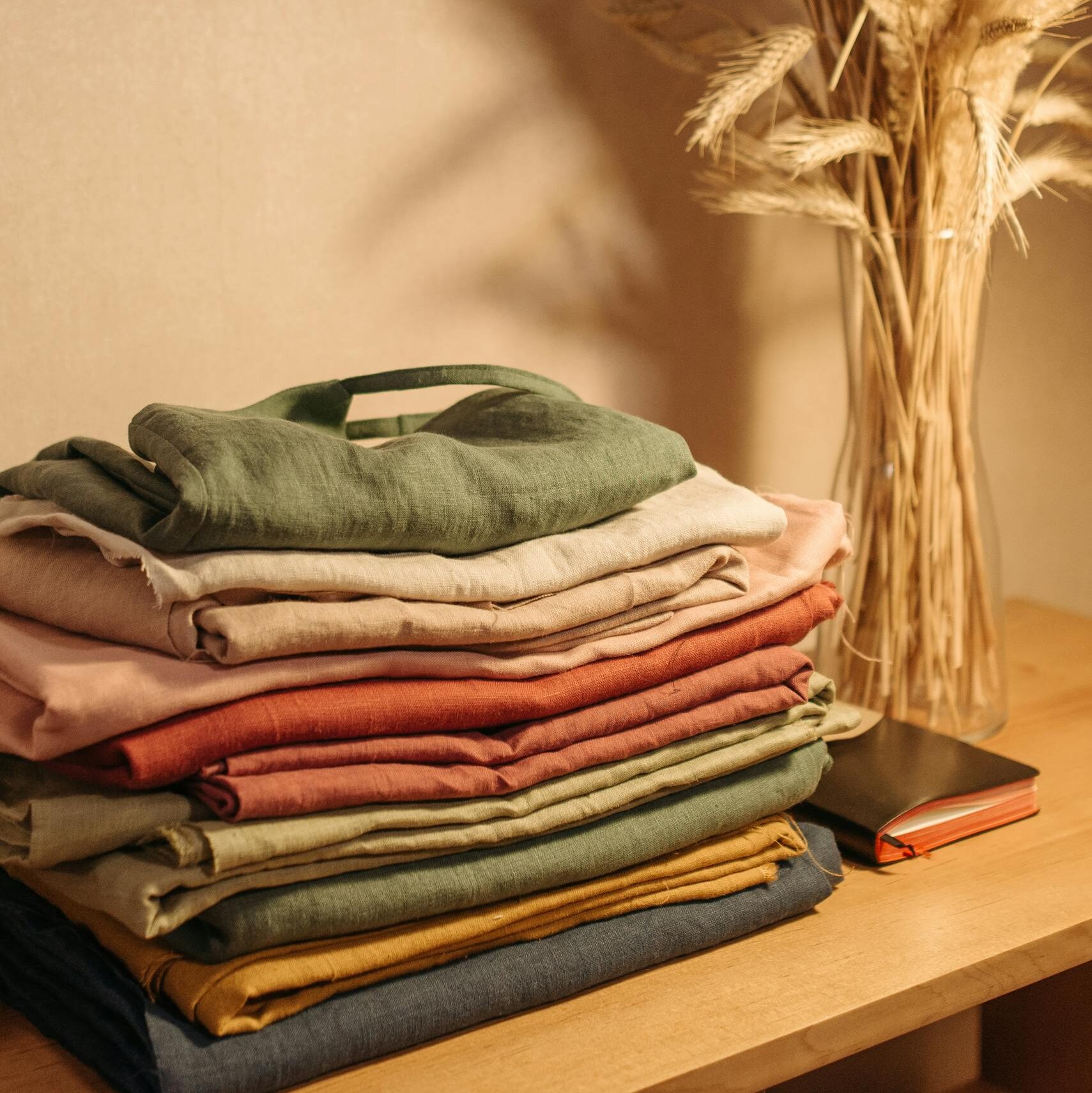Sustainable fashion isn’t just about buying less or choosing ethical brands – it’s also about understanding the materials that make up our clothes and where these materials come from. The fabrics we wear have a huge impact on the environment, from water consumption to chemical pollution and waste.
Some materials are planet-friendly, biodegradable, and responsibly sourced, while others are energy-intensive, polluting, or shed microplastics into the ocean.
If you’re on a quest to live a more eco-friendly life, check out this guide to the best and worst fabrics when it comes to sustainability.


The Best Sustainable Fabrics
These fabrics are low-impact, durable, and biodegradable – perfect for a more sustainable wardrobe.
1. Organic Cotton
Why it’s sustainable:
Traditional cotton farming is notorious for using huge amounts of water and pesticides. Organic cotton, on the other hand, is grown without harmful chemicals and typically requires less water when farmed using sustainable practices.
What to look for:
🌲 Certified organic (GOTS, OEKO-TEX)
🌲 Fair Trade certification to ensure ethical production
2. Linen
Why it’s sustainable:
Made from flax plants, linen requires minimal water and grows without the need for pesticides. It’s also biodegradable and gets softer over time, making it a great long-term investment.
What to look for:
🌲 Organic linen for an even lower environmental impact
🌲 Naturally dyed options to avoid chemical processing
3. Hemp
Why it’s sustainable:
Hemp is one of the most eco-friendly crops – it grows quickly, doesn’t need pesticides, and even improves soil health. Like linen, it’s breathable, durable, and biodegradable.
What to look for:
🌲 Organic or naturally processed hemp
🌲 Blends with organic cotton for extra softness
4. TENCEL™ (Lyocell & Modal)
Why it’s sustainable:
TENCEL™ is a wood-based fiber made from eucalyptus, beech, or spruce trees. The production process uses a closed-loop system, meaning nearly all water and solvents are recycled instead of polluting the environment. It’s also biodegradable and requires less water and land than cotton.
What to look for:
🌲 TENCEL™ branded lyocell or modal (certified by Lenzing)
🌲 FSC-certified wood sources
5. Recycled Fabrics (Cotton, Wool, Polyester)
Why they’re sustainable:
Using recycled materials reduces textile waste, saves resources, and minimizes the demand for virgin fiber production. Recycled wool and cotton keep natural fibers in circulation, while recycled polyester repurposes plastic waste, preventing it from ending up in landfills or oceans.
What to look for:
🌲 GRS (Global Recycled Standard) certification
🌲 Post-consumer recycled content (rather than industrial waste)

Fabrics to Avoid
These fabrics are linked to high water usage, pollution, and synthetic waste.
1. Conventional Cotton
While organic cotton is a great choice, conventional cotton is one of the most unsustainable fabrics out there. It requires huge amounts of water (one T-shirt can take over 2,700 liters to produce) and relies heavily on pesticides that damage ecosystems.
🌲Better alternative: Organic cotton or hemp
2. Polyester (Virgin Polyester, Nylon, Acrylic)
Synthetic fabrics like polyester, nylon, and acrylic are made from petroleum-based plastics, meaning they contribute to fossil fuel extraction and take hundreds of years to decompose. They also shed microplastics when washed, polluting waterways and marine life.
🌲Better alternative: Recycled polyester or TENCEL™
3. Rayon (Viscose, Bamboo Viscose, Modal)
While rayon and bamboo viscose are often marketed as sustainable, the reality is more complicated. The production process usually involves harsh chemicals, deforestation, and water pollution. Unless it’s TENCEL™ (which uses a closed-loop system), most rayon-based fabrics are not truly eco-friendly.
🌲Better alternative: TENCEL™ or organic hemp
4. Leather & Conventional Wool
Both leather and conventional wool have high environmental costs. Leather production involves toxic tanning chemicals and deforestation for cattle farming, while conventional wool contributes to land degradation and methane emissions from sheep.
🌲Better alternative: Plant-based leather alternatives (like mushroom or apple leather) and certified sustainable wool (RWS – Responsible Wool Standard)
If you want a more sustainable wardrobe, fabric choice is just as important as where you shop. Prioritizing natural, biodegradable, and recycled materials can significantly reduce your environmental impact while ensuring your clothes last longer.
Next time you’re out shopping, check the materials label! A small change can make a big difference.
